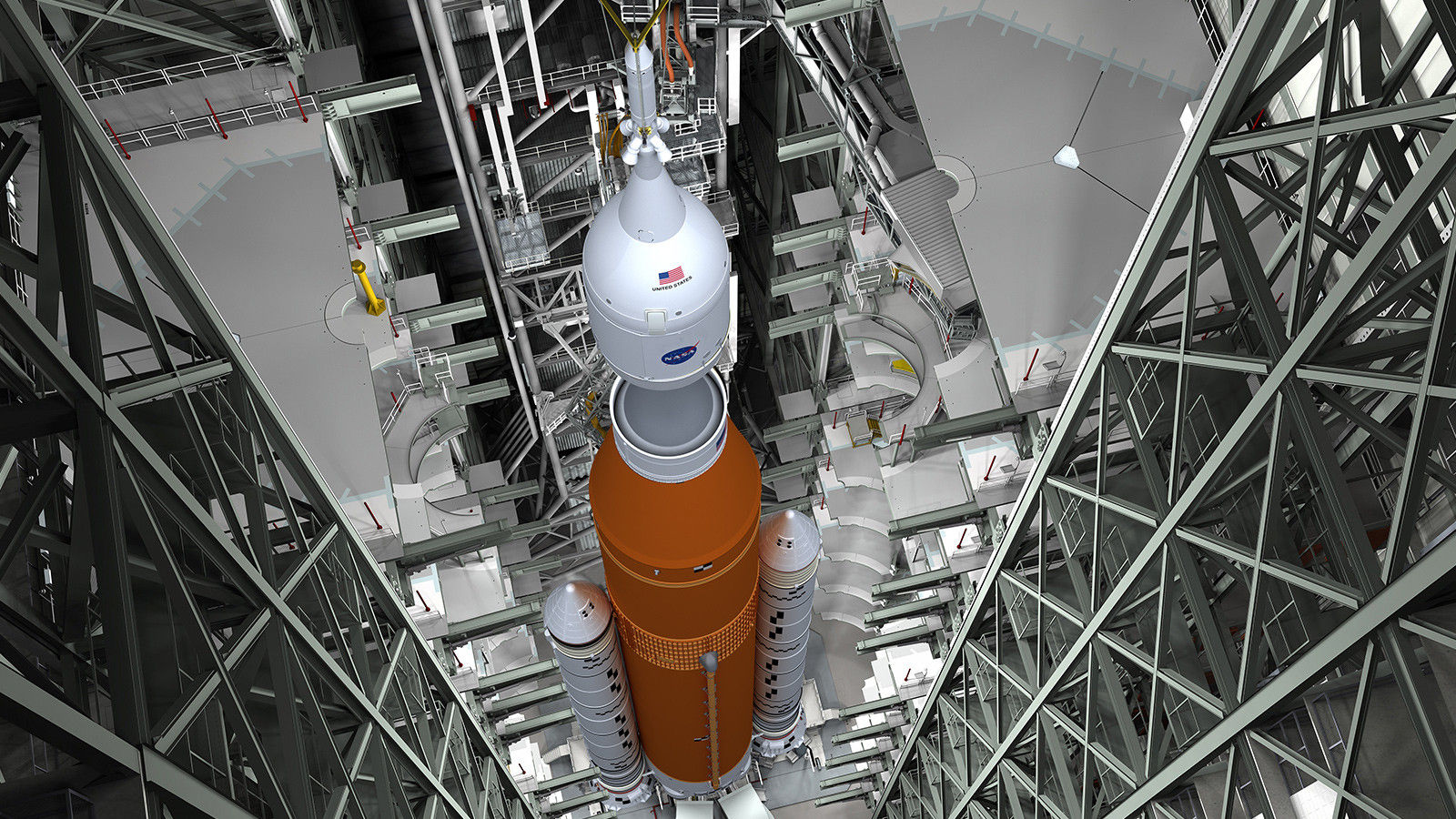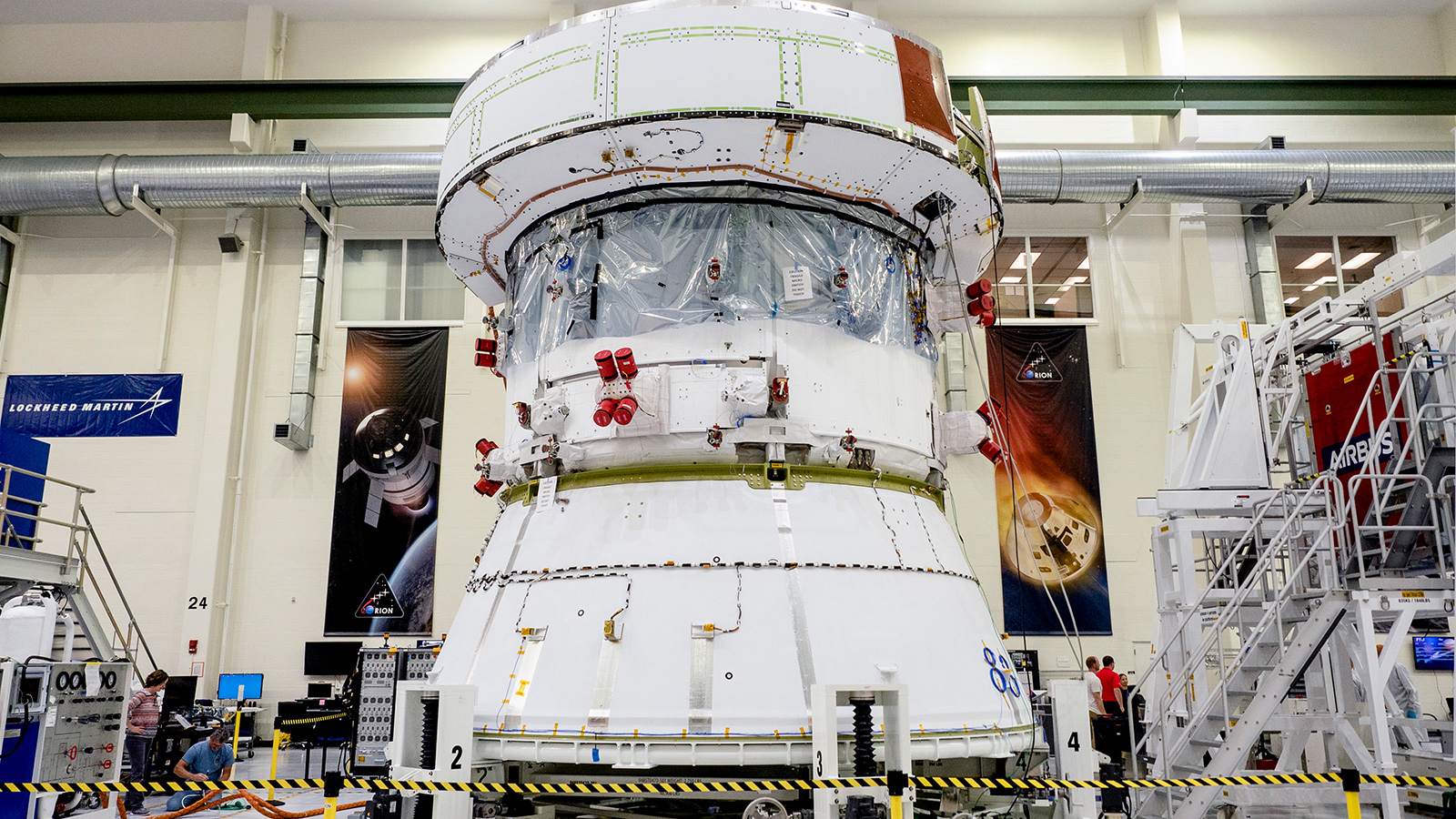Stay Up to Date
Submit your email address to receive the latest industry and Aerospace America news.
The Apollo program proved to be unsustainable. If NASA and the Trump White House want to avoid the same fate for their Artemis lunar program, they should learn from Apollo’s history. Space historian John Logsdon shares some of the lessons he sees.
The siblings Apollo and Artemis are not only related in Greek mythology. The outcome of NASA’s proposed Artemis lunar program will determine whether 500 years from now humanity’s first step on the moon will indeed mark the 20th century as “the century when we began the exploration of space,” as American historian and Kennedy adviser and biographer Arthur Schlesinger Jr. once predicted, or whether Apollo 11 may be remembered as a glorious moment “without lasting significance,” as former NASA chief historian Roger Launius warns in “Apollo’s Legacy,” his book timed to coincide with the 50th anniversary of the moon landing.
Failure to sustain the Artemis program, coming on the heels of previous unsuccessful attempts in 1989 and 2004 to initiate a government-led human space exploration program, would lend credence to Launius’ assessment.
Despite the many difficulties that surely lie ahead, the U.S. is closer today, both technically and politically, to returning Americans to the moon than at any point since Apollo 17 left the lunar surface in December 1972. But success in that effort is far from guaranteed. Lessons relevant to the success of Artemis should be drawn from the Apollo experience. Learning from the initial lunar landing program is important to continuing today’s momentum and, in the process, giving lasting significance to Apollo.
Build for the future
One lesson is that hardware must be developed with sustainability in mind. The Apollo program’s overriding focus on meeting President John Kennedy’s “before this decade is out”goal had unfortunate consequences for the future of the U.S. human spaceflight program. The Apollo elements were optimized for carrying people to the lunar surface at the earliest possible moment, and obviously were successful in that endeavor. But the combination of the Saturn V rocket and the Apollo spacecraft turned out to be not well-suited for a sustainable program of space development and exploration. The complex Saturn V was extremely expensive to produce and operate. While the Apollo command and service spacecraft could have served as a versatile though expensive space transportation system, the lunar excursion module was designed for the single purpose of carrying two astronauts between lunar orbit and the lunar surface. Its fragility, small size and limited cargo-and-crew-carrying capacity made it unsuitable for other post-Apollo uses. In addition, the Saturn/Apollo system posed more safety risks than some top NASA managers found comfortable. For example, soon after Apollo 11, Robert Gilruth, the head of the Manned Spacecraft Center in Houston, pushed for ending Apollo flights to the moon “before we lose someone.”
NASA’s original plans called for nine more Apollo landings after Apollo 11, but that plan began to unravel just six months after Neil Armstrong’s historic footstep. In January 1970, the Apollo 20 mission was canceled, and its Saturn V booster reassigned to the Skylab space station effort. Then, in September, after problems with the Apollo 13 flight, NASA proposed canceling two of the remaining six missions on both cost-saving and risk-avoidance grounds. The Nixon White House, spooked by the close call of Apollo 13, quickly accepted NASA’s proposal. Nixon even suggested canceling the final two Apollo missions, but was persuaded not to pursue this course. Nixon correctly predicted as Apollo 17 left the moon in December 1972 that it would be “the last time in this century that men will walk on the moon.”
The U.S. basically started over on human spaceflight with the 1972 decision to develop the space shuttle as the major post-Apollo program and then the 1984 decision to build a space station. Apollo hardware became museum exhibits, reminding us of a great achievement that was not soon to be repeated.
If Artemis is to avoid the dead-ended fate of Apollo, it is essential that the push to get two Americans back to the moon by 2024 not lead to the kind of system and hardware decisions that made Apollo unsustainable. The launch vehicle and spacecraft designs must be capable of sustainable, affordable operation at an acceptable level of risk, rather than simply being designed to meet the 2024 goal. Not giving adequate consideration to long-term operability is to ignore the Apollo experience.
Adapting for Artemis
To carry out Apollo, the U.S. mobilized a space-industrial complex centered on NASA and its major contractors. That complex remains in existence today, both as an essential element of U.S. space competence and a barrier to the institutional and management innovation necessary to make Artemis a success. The key decisions about how to meet Kennedy’s “before this decade is out” deadline were made by NASA, with the space agency closely managing its contractors as they built the hardware NASA had designed. NASA engaged its congressional overseers in a partnership in which it had the freedom to make technical decisions in return for distributing the resulting work to key states and congressional districts.
This NASA-centric approach was key to Apollo’s success, but it is ill-fitted for Artemis. In recent years, as the competence and creativity of the U.S. private space sector has grown, NASA, grudgingly, has begun to accept less control over execution of its human spaceflight programs. But NASA’s traditional contractors are pushing for continued support rather than sharing the workload with new entrants, and key members of Congress have been less than willing to allow the space agency the flexibility to pursue what it judges to be the best path to program success. One example of this behavior was Congress specifying in NASA’s 2010 authorization bill the performance characteristics for the heavy-lift booster NASA was to develop; the result was the Space Launch System. More recently, decisions regarding the distribution of work for the Artemis lunar lander may be another example of not giving NASA the flexibility needed for success. Finding the appropriate balance between a continuing key role for an evolved NASA and the contributions of both old and new entrants in the U.S. private sector is essential for U.S. leadership in sustained space exploration.
Wanted: geopolitical clarity
Government-directed human spaceflight programs are in their essence foreign policy initiatives, intended to send a message of national power to the rest of the world. Apollo had a clarity of geopolitical purpose that is so far lacking in Artemis. Apollo was aimed at signaling overall U.S. leadership in the Cold War competition with the Soviet Union. Kennedy’s decision to go to the moon had little to do with future space exploration; rather, he chose to use the space program to pursue broader national and domestic political purposes. In announcing his decision in May 1961, he suggested that it was “time for this nation to take a clearly leading role in space achievement,” noting that he was proposing to send Americans to the moon primarily because “no single space project in this time period will be more impressive to mankind.”
Speaking at Rice University in September 1962, Kennedy suggested that “no nation which expects to be the leader of other nations can expect to stay behind in this race for space.” A few months later he told his space advisers “the Soviet Union has made this [space leadership] a test of the system. So that’s why we’re doing it,” adding that Apollo “is important for political reasons, international political reasons.”
In terms of its clearly stated foreign policy objective, Apollo was a remarkable success, both as it happened and even today. Much had changed in the U.S.-Soviet relationship by the time Armstrong stepped on the lunar surface, but that achievement, as Kennedy had intended, was indeed “impressive to mankind.” There was no doubt after the lunar landing that the U.S. had become the leader in space. The accompanying prestige became a positive soft power asset underpinning the U.S. position in the world, both in 1969 and in the years to follow. The worldwide enthusiasm during this year’s celebrations of the Apollo 11 50th anniversary suggests that the reputational payoffs from the moon program linger even after half a century. Apollo remains a success story in the use of space achievement as a tool of American diplomacy.
Demonstrating U.S. global leadership is once again being put forward as a leading reason for returning to the moon. But how best to achieve such a demonstration will be a challenge. Apollo was a unilateral undertaking, with NASA in the command role. Apollo’s success was clearly an American achievement.
The approach to Artemis must necessarily be different, given other countries’ ambitions and increasing competence. At the March 2019 National Space Council meeting, chairman Vice President Mike Pence suggested, “We’re in a space race today, just as we were in the 1960s, and the stakes are even higher.” He added, “Last December, China became the first nation to land on the far side of the moon and revealed their ambition to seize the lunar strategic high ground and become the world’s preeminent spacefaring nation.” But it is not just China that has space leadership ambitions. Other spacefaring countries are also interested in lunar exploration and exploitation. If the U.S. is to maintain a space leadership position, engaging others in Artemis is essential.
The U.S. is not today in a two-entry space race, as was the case during Apollo; instead, it must operate in an environment that mixes competition and cooperation. At the Aug. 20 Space Council meeting, Pence declared, “The National Space Council today will send new policy recommendations to the president that will help drive even greater cooperation between our government … and like-minded nations across the world — nations that share our values of democracy, freedom and the rule of law.”
Turning that rhetoric into reality will require creative diplomacy to create a long-term cooperative international strategy that other nations will embrace. If Artemis is to have lasting geopolitical benefits similar to those that are part of the Apollo legacy, the U.S. will have to earn its leadership.
Beyond unilateralism
NASA’s exploration planning has in recent months focused on the largely unilateral U.S. effort to get back to the moon by the end of 2024. That effort has echoes of Apollo in its emphasis on getting two Americans to the lunar surface for a short stay. Plans for missions beyond the 2024 landing, and the role of international partners in those missions, are not yet clear. When, even if, the transition to the proposed multination approach will emerge is uncertain. There could well be a temptation to continue with a U.S.-dominant approach, avoiding the hard negotiations and compromises required to create an international space exploration coalition, with the United States as lead partner, but with significant contributions from other nations.
Such a coalition is the best path to success in human space exploration. The December 2017 Space Policy Directive-1 calls for NASA to lead “an innovative and sustainable program of exploration with commercial and international partners to enable human expansion across the solar system.” If that objective is met, Apollo, as the first step in that expansion, will indeed go down, not only as a magnificent achievement, but also as a milestone in human history.
About John M. Logsdon
John M. Logsdon is professor emeritus at George Washington University and has written books on the space policies of U.S. Presidents Kennedy, Nixon and Reagan. He founded GW’s Space Policy Institute in 1987 and directed it until 2008. Logsdon was a member of the Columbia Accident Investigation Board. He has a doctorate in political science from New York University and a Bachelor of Science in physics from Xavier University. He is editor of “The Penguin Book of Outer Space Exploration.”
Related Posts
Stay Up to Date
Submit your email address to receive the latest industry and Aerospace America news.





